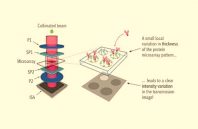With a goal to reduce the mortality rate from sepsis by more than 70%, a team of European scientists has developed a microarray detector that uses a tiny blood sample to produce results in less than 30 minutes. Current techniques for detecting sepsis can take hours or even days to produce the results and diagnosis.
Programmed to detect proteins and E. coli, one of the deadly bacteria that can cause the human body to go into septic shock, the detector then uses light to look for specific biomarkers (the telltale signs or an indicator of a disease) that are as small as few nanometers in size.
The rapid microarray detector looks at a small blood sample taken from a thumb or forefinger. The patient’s blood sample is then separated in a centrifuge so that a clinician can examine the plasma, the part of the blood sample where all the proteins are contained.

 (585) 768-2513
(585) 768-2513

